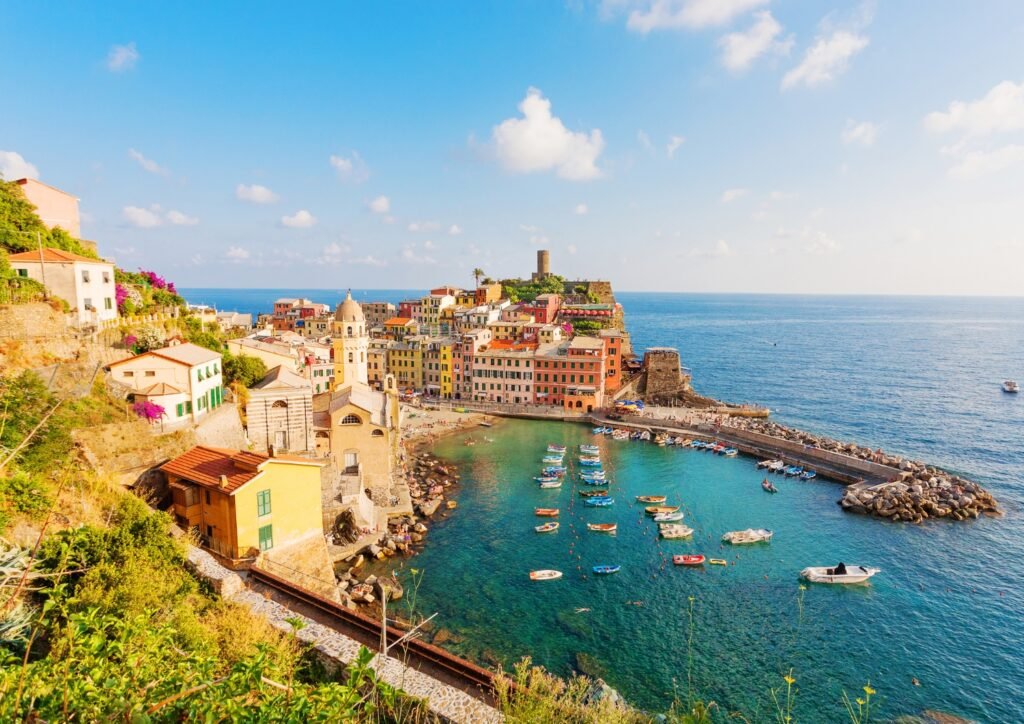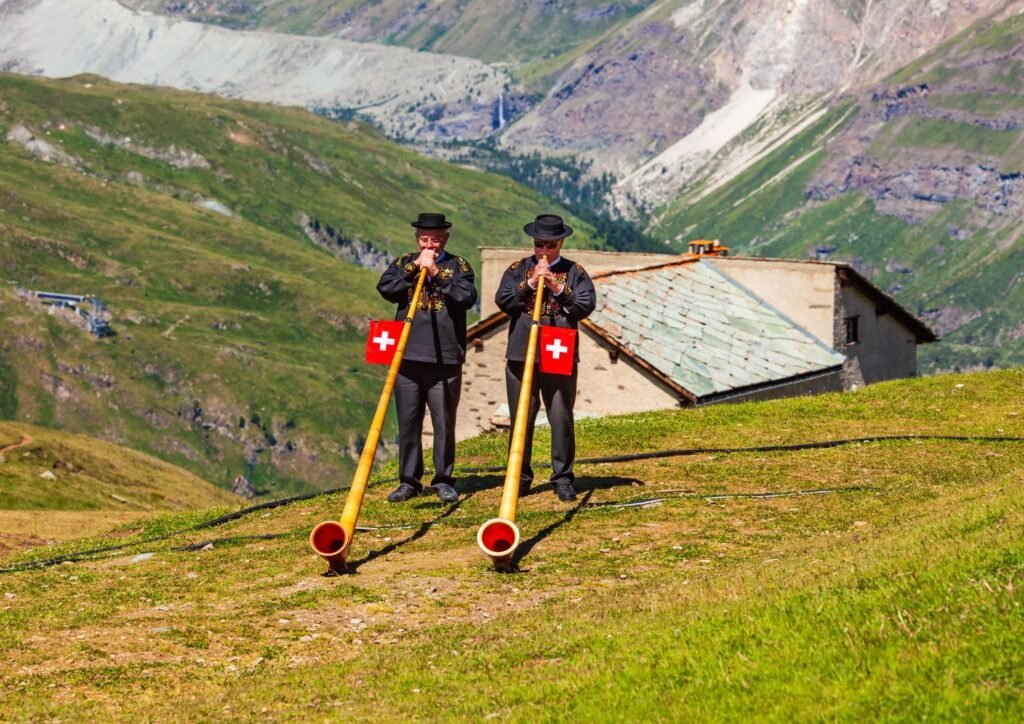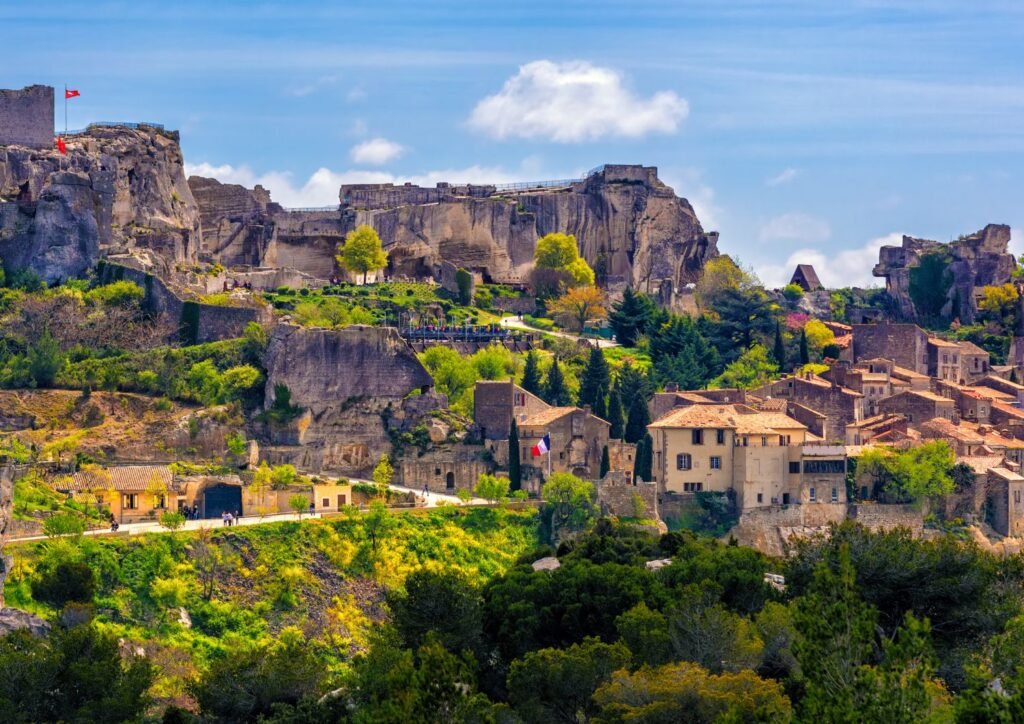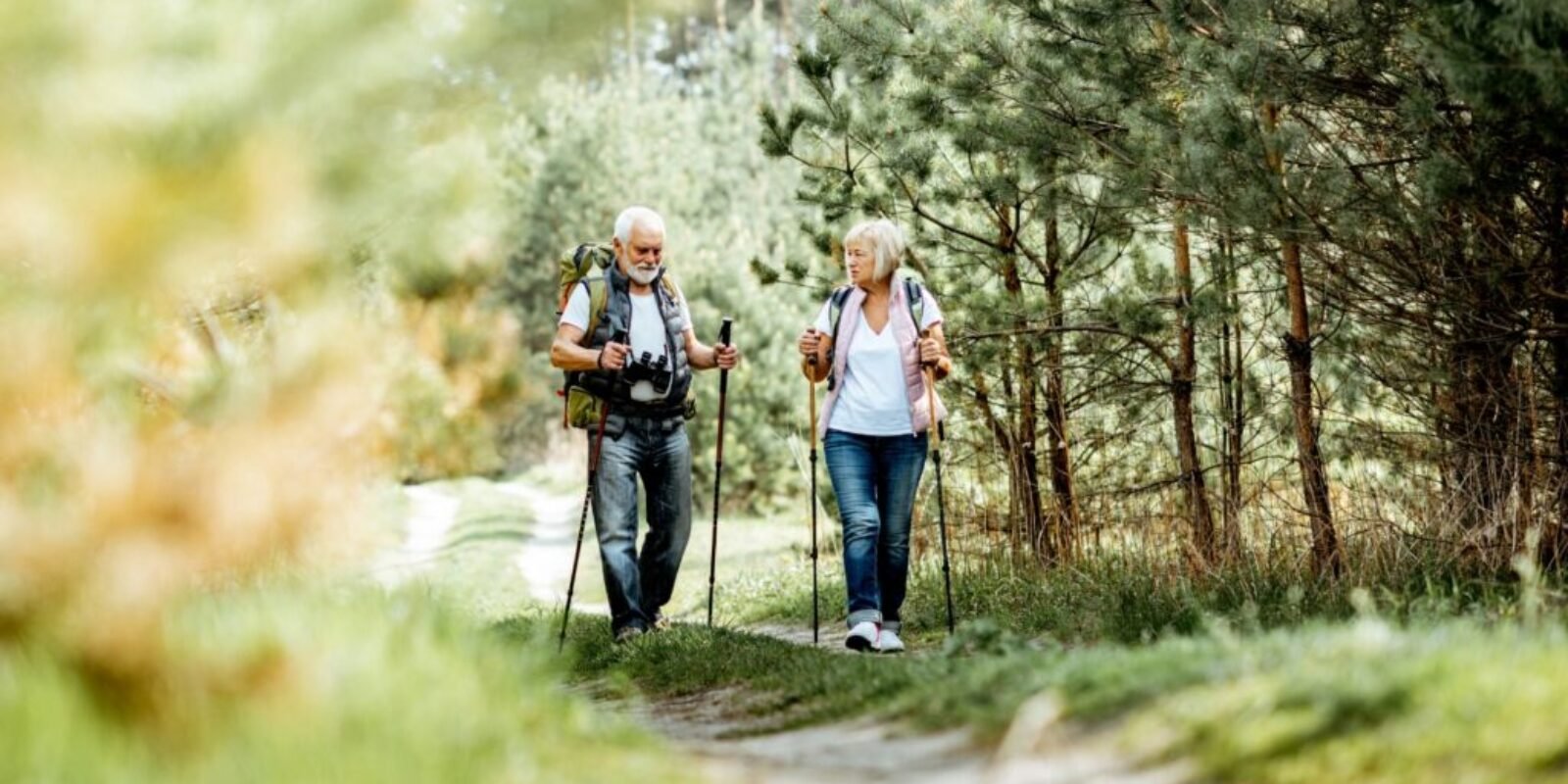Last Updated on June 27, 2025 by Julian Espinosa
Have you ever considered that the simple act of walking could be your gateway to one of life’s most enriching travel experiences? In recent years, walking holidays have gained remarkable popularity among seniors seeking meaningful ways to explore Europe’s breathtaking landscapes.
These aren’t your ordinary strolls—they’re thoughtfully designed walking adventures that combine gentle exercise, cultural immersion, and the sheer pleasure of experiencing historic and natural wonders at a comfortable pace. For many seniors embracing their retirement years, these journeys offer the perfect balance of activity, discovery, and relaxation.
The post-pandemic world has brought a renewed appreciation for simple pleasures and meaningful experiences. Walking tours allow you to fully engage with your surroundings—feeling the gentle Mediterranean breeze in Cinque Terre, absorbing the pastoral tranquility of the Cotswolds, marveling at Alpine panoramas in Switzerland, or inhaling the lavender-scented air of Provence.
Each destination offers accessible trails with varying difficulty levels, ensuring options for different fitness abilities. You’ll discover charming villages, savor local cuisines, and create lasting memories without the rush and crowds of typical tourist experiences.
In this article, we’ll guide you through four spectacular European destinations perfect for senior walking holidays. We’ll explore what makes each location uniquely suitable for mature travelers, share practical tips for preparing for your journey, and provide essential gear recommendations to ensure comfort and safety.
Whether you’re a seasoned walker or considering your first walking holiday, this guide will inspire you to take that first step toward an unforgettable European adventure.

Why Choose a Walking Holiday in Your Senior Years?
Senior-friendly travel walks in Europe offer a uniquely healthy, invigorating, and pleasurable experience for those looking to live fulfilling lives in retirement. These journeys provide the perfect combination of gentle exercise, cultural immersion, and the sheer pleasure of being surrounded by Europe’s most stunning landscapes.
Walking holidays offer numerous benefits specifically valuable for seniors:
First, they provide cardiovascular exercise without the harsh impact of more strenuous activities. Walking strengthens your heart, improves circulation, and maintains healthy blood pressure—all crucial health considerations as we age.
Second, these walking experiences nurture your mental well-being. Research consistently shows that combining physical activity with natural settings dramatically reduces stress and improves cognitive function. Can you imagine the calming effect of walking through Provence’s lavender fields or along the colorful coastline of Cinque Terre?
Third, walking tours promote social connections. Whether traveling with longtime friends, a partner, or joining a guided group tour, these shared experiences foster meaningful conversations and create lasting memories. Have you noticed how walking side-by-side often leads to deeper, more reflective conversations than sitting across from someone?
Europe classifies walking tourism as “soft adventure tourism”—perfect for those seeking active experiences without extreme physical challenges. According to recent studies, most walking tour participants in Europe are 55 and older, confirming these experiences are ideally suited for seniors.
This makes perfect sense. Walking is primarily a pleasure for those who have gained the wisdom to appreciate simpler joys. As the saying goes, “The older you get, the wiser you are”—and perhaps that wisdom includes recognizing the profound satisfaction of exploring the world at walking pace.
Prefer to listen rather than read?

A Rare Joy for the Discerning Traveler
Of all the predictable things that new acquaintances might tell you about themselves, “I love to travel” reveals surprisingly little. This common statement tells you nothing unique about the person—it simply reflects our universal human desire to explore.
But walking holidays? Not everyone embraces this particular pleasure. While some people would rather drive short distances than walk them, a special kind of traveler understands the unique joy of exploring on foot. In airports, you’ll encounter grown adults who seem determined to avoid walking, pulling their luggage behind them as they stand motionless on moving walkways.
They block pathways and crowd escalators, seemingly unable to comprehend why anyone would choose to walk when mechanical assistance is available. It’s as if the very concept of walking as pleasure eludes them entirely.
This disconnect highlights just how special walking enthusiasts are. The appreciation of walking as a means of travel and discovery represents a discerning taste, a preference for authentic experience over convenience.
Those who delight in walking tours understand something profound: when you travel slowly, you perceive details, nuances, and connections that faster travelers miss entirely. Have you ever noticed how a landscape reveals itself differently when experienced at walking pace rather than through a car window?
4 Spectacular European Destinations for Senior-Friendly Travel Walks in Europe
For millions of seniors who have spent decades in working life, the novelty of discovering breathtaking landscapes while journeying on foot often awakens a refreshingly youthful sense of wonder.
Towering peaks, majestic glaciers, rolling green valleys, and picturesque villages nestled against dramatic backdrops create postcard-perfect settings that inspire genuine awe. The glorious, ever-changing scenery alone can evoke feelings of profound contentment that make these senior-friendly travel experiences truly special.
Below are four exceptional destinations that offer truly satisfying walking holidays in Europe, each with unique features that make them particularly suitable for senior travelers.

Cinque Terre, Italy
Cinque Terre’s dramatic coastal landscape — with its rugged cliffs, colorful villages perched on hillsides, and terraced vineyards overlooking the Mediterranean Sea—creates an idyllic setting for senior-friendly walking experiences.
The five villages of Cinque Terre — Monterosso al Mare, Vernazza, Corniglia, Manarola, and Riomaggiore — each possess unique charm. (The name “Cinque Terre” appropriately means “five lands.”) These villages are connected by a 16km stretch of rocky seaside paths between the town of Levanto and the harbor of Porto Venere.
All five villages deserve exploration — each one offers picturesque beauty and authentic Italian atmosphere. The pastel-colored stone houses, narrow alleyways, and lively harbors create a sense of old-world authenticity and rich history unlike anywhere else.
For culinary enthusiasts, we recommend visiting one of the local trattorias for the region’s specialties, particularly the renowned Pesto alla Genovese. No need to overthink your dining choices — the local food speaks for itself.
Spring is ideal for walking in Cinque Terre, when the landscape comes alive with lush greenery, newly budding grapevines, wildflowers, bougainvillea, and fragrant citrus blossoms.

What makes Cinque Terre ideal for senior-friendly travel walks?
The network of trails connecting the villages offers spectacular coastal views and provides an intimate experience of the region’s natural beauty. While some paths wind through vineyards and along cliffs offering unparalleled vistas, others are relatively gentle and suitable for seniors.
The paths through the area can be challenging in places, but several trails between villages are relatively gentle. These perfect paths for senior-friendly walks often follow the late afternoon sun, making them especially pleasant.
Seniors can also choose easier routes like the Via dell’Amore or sections of the Sentiero Azzurro. These well-maintained and manageable paths offer stunning views without excessive physical demands.
Cinque Terre also offers convenient train connections between villages, allowing seniors to customize walking distances based on their preferences and energy levels. You’ll be pleased to know that boats also ply the coast, offering a scenic alternative for traveling between villages when you prefer to rest your feet.
The Cotswolds, England
Known for its gently rolling hills, charming villages, and well-maintained footpaths, the Cotswolds offers scenic walks through quintessential English countryside that epitomize rural tranquility.
Bubbling streams, rolling hills, and lush meadows define the landscape and create the perfect backdrop for leisurely senior-friendly travel walks. The picturesque region is dotted with sheep farms, historic estates, and ancient woodlands, creating a patchwork of quiet pastoral beauty that surrounds you as you walk.
The region features stunning historic architecture, including medieval churches, manor houses, and market halls. The old buildings showcase distinctive Cotswold stone—a golden limestone that gives the area its characteristic warm hue and creates a uniquely English atmosphere.
Spring transforms the countryside into a vibrant display of color and life, with bright flowers emerging from fields of yellow rapeseed to meadows bursting with bluebells, daffodils, and wildflowers.
What makes the Cotswolds ideal for senior-friendly travel walks?
The gently rolling landscape makes the Cotswolds more accessible for seniors compared to steep or rugged terrain elsewhere. The walking trails often follow well-maintained paths and lanes rather than challenging inclines, creating perfect conditions for enjoyable senior-friendly travel experiences.
The Cotswolds offers a wide range of walking routes suitable for various fitness levels. These include shorter, more manageable paths that can be tailored to accommodate different walking abilities.
Seniors appreciating comfortable, relatively flat terrain will find the Cotswolds particularly appealing. The trails allow for enjoyable walks without excessive physical strain, making them perfect for those who prefer gentler exercise.
The villages of the Cotswolds are located relatively close to each other, making it easy for seniors to explore multiple charming settlements in a single day. This proximity allows for flexibility in planning each day’s activities.
Walking through the Cotswolds means strolling through streets lined with traditional stone houses, beautiful gardens, and historic landmarks without requiring long-distance treks.

The Swiss Alps, Switzerland
The Swiss Alps represent the pinnacle of natural wonder in Europe. This majestic mountain range encompasses iconic peaks including the Matterhorn, Eiger, Jungfrau, and Mont Blanc, creating some of the world’s most dramatic landscapes.
The towering mountains with their rugged cliffs and snow-capped summits create a stunning backdrop for senior-friendly travel walks that inspire awe and wonder with every step.
The Alps feature picturesque valleys, lush meadows, and alpine forests. The landscape explodes with colorful wildflowers, crystal-clear lakes, and cascading waterfalls that create a feast for the senses.
Magnificent glaciers like the Aletsch Glacier—the largest in the Alps—add to the allure of this remarkable region. These immense ice masses carve their way through the mountains, creating truly awe-inspiring vistas that must be experienced firsthand.
What makes the Swiss Alps ideal for senior-friendly travel walks?
Seniors seeking walking experiences will discover networks of well-marked and maintained trails throughout the Swiss Alps. These routes vary from gentle pathways to more challenging hikes, allowing you to find options perfectly suited to your abilities.
There are numerous routes ranging from gentle strolls through valleys to more demanding paths for those seeking greater challenges. This variety ensures everyone can find their perfect walking experience.
Many trails in the Swiss Alps traverse gentle terrain with manageable inclines, allowing seniors to enjoy stunning mountain views without encountering overly steep or challenging paths.
The Swiss Alps offer exceptional flexibility, allowing seniors to choose shorter walking routes or adjust distances to match their personal preferences and physical comfort levels.
The region is well-equipped with amenities, including easily accessible accommodations, restaurants, and services specifically designed with visitors’ needs in mind. These facilities are typically within easy walking distance of trails, providing convenient support and comfort for senior travelers.

Provence, France
Provence ranks among the world’s most beautiful regions, famous for its vibrant lavender fields, particularly in the Luberon and Valensole areas that create purple tapestries across the landscape.
A senior-friendly travel walk through Provence means being surrounded by endless rows of purple blooms stretching across the landscape, especially impressive during full bloom in summer months when their sweet fragrance fills the air.
The countryside offers diverse landscapes including rolling hills, olive groves, and cypress-lined avenues that seem to stretch endlessly toward the horizon. The combination of these varied elements creates a patchwork of colors, textures, and shapes unlike anything else in Europe.
The region is dotted with picturesque villages featuring colorful stone houses, narrow cobblestone streets, and a kaleidoscope of multicolored shutters that create a photographer’s paradise.
From mid-April to early June, the region explodes with colors as lavender fields bloom alongside wildflowers, creating a spectacular backdrop for walking. The weather during this period is typically mild and pleasant, offering ideal conditions for outdoor exploration.
After a satisfying day of walking, seniors can treat themselves to visits at renowned local wineries and enjoy the famous bouillabaisse of the region in places like Gordes, Roussillon, and Moustiers-Sainte-Marie.
What makes Provence ideal for senior-friendly travel walks?
Numerous walking trails across Provence offer relatively flat terrain, particularly in coastal areas and along riverbanks, creating perfect conditions for leisurely exploration without significant physical challenges.
The walking paths throughout Provence are generally well-maintained and comfortable, with very few elevation changes that might challenge older walkers. This gentle topography makes the region ideal for senior-friendly travel experiences.
Many trails consist of gravel or packed dirt surfaces that provide stable footing while walking. Though path conditions may vary in smoothness, most offer sufficient stability and traction for comfortable walking experiences.
The trails feature gradual inclines and declines that seniors can manage without difficulty, offering opportunities for light exercise without overtaxing the body. These gentle paths provide an excellent balance of physical activity and enjoyable sightseeing.

What You’ll Need for Your Senior-Friendly Travel Walks?
To maximize enjoyment of your senior-friendly walking holiday, proper preparation and equipment are essential. Keep these recommendations in mind:
Invest in sturdy, comfortable walking shoes or hiking boots with good support. Ensure they’re well broken in before your trip to avoid blisters or discomfort during your walks. Pack lightweight, moisture-wicking clothing appropriate for the weather and region you’ll be visiting. Layering is key, especially in areas where temperatures might vary throughout the day.
Carry a lightweight, comfortable backpack or daypack to hold essentials like water, snacks and personal items. And don’t forget to pack a lightweight camera. You will want to take pictures! Depending on the terrain and your personal preference, consider bringing walking poles. These can provide stability and support, especially on uneven or hilly trails.
Always bring ample supplies of sunscreen for protection, especially in warmer climates. Include sunglasses and a wide-brimmed hat to shield yourself from the sun, particularly during midday walks. Depending on the season and location, pack a lightweight, packable rain jacket or poncho. Unexpected showers are common in many European regions, particularly in spring and fall.
For non-English speaking regions, a language guide or translator app is indispensable. This will be especially helpful when you need to inquire for directions. That said, bring a map or a guidebook. Remember to carry essential documents like identification, insurance information, and any necessary permits or tickets for the attractions you intend to enjoy during your senior-friendly travel walks.
Have a Wonderful Walk!
There’s something deeply satisfying about taking a walk through a beautiful landscape. The experience doesn’t require complex analysis or special training—just an openness to the simple pleasure of moving through remarkable surroundings.
Perhaps this universal appeal stems from walking’s fundamental connection to our humanity. After all, walking on two feet has been our primary mode of transportation since prehistoric times, encoded in our very DNA.
Throughout history, walking paths have led people to significant discoveries and profound insights. From ancient pilgrimage routes to forest trails, the simple act of walking has inspired countless individuals across generations. Have you ever noticed how some of your clearest thinking happens during a simple walk?
What we do know is that walking through picturesque European landscapes offers a unique form of fulfillment. The experience connects us with both natural beauty and cultural heritage in a way that feels earnest and authentic.
Under these special circumstances, walking transcends mere transportation—it becomes a meaningful journey in itself. The path, the pace, and the pleasure of discovery become the destination, offering a profound satisfaction that faster modes of travel simply cannot provide.
What walking experiences are calling to you? Which European landscapes would you most like to explore at walking pace? The four destinations we’ve highlighted offer distinctive experiences, each with its own character and charm. Perhaps one has particularly captured your imagination?
Frequently Asked Questions About Senior-Friendly Travel Walks
- How physically fit do I need to be to enjoy these walking holidays?
- Walking holidays can be adapted to various fitness levels. Most tour operators offer options ranging from “gentle” to “moderate” to “challenging.” As a general guideline, if you can comfortably walk 3-5 miles (5-8 km) on flat terrain at home, you’ll likely enjoy a gentle to moderate walking tour. Start with shorter walks and gradually build your stamina before your trip.
- What’s the best time of year for walking holidays in Europe?
- Spring (April-June) and fall (September-October) typically offer the most pleasant walking conditions with mild temperatures and fewer crowds. Summer can be wonderful but may be hot in Mediterranean regions like Cinque Terre and Provence. The Cotswolds and Swiss Alps are generally comfortable even in summer months.
- Should I book a guided tour or plan an independent walking holiday?
- Both options have advantages. Guided tours handle logistics, provide expert commentary, and offer social opportunities with fellow travelers. Independent trips offer more flexibility and privacy. For first-time walking travelers, especially in areas where you don’t speak the language, a guided tour can provide welcome peace of mind.
- How do I prepare for a walking holiday if I have mobility concerns?
- Communicate with tour operators about specific needs—many offer “gentle” itineraries specifically designed for seniors or those with mild mobility limitations. Consider using walking poles for stability, and build walking stamina gradually before your trip. Some companies also offer e-bike options for portions of walking routes.
- What about luggage transfer between accommodations?
- Many walking holiday companies offer luggage transfer services, allowing you to walk with just a daypack while your main luggage is transported to your next accommodation. This service is especially valuable for seniors who wish to enjoy the walking experience without carrying heavy bags.
- Are these walking destinations accessible for solo senior travelers?
- Absolutely! All four destinations are popular with solo travelers. Guided group tours provide built-in companionship and security, while independent travelers will find these regions safe and welcoming. Many companies offer reduced or waived single supplements during shoulder seasons.
- How can I best prepare physically for a walking holiday?
- Start a regular walking routine at least 3-4 months before your trip. Begin with comfortable distances and gradually increase both length and terrain variety. Include some hills if your destination has elevation changes. Wear the same shoes or boots you’ll use on your holiday to ensure they’re well broken in.
Quick Tips for Senior Walking Holidays
- Book accommodations with elevators or ground-floor rooms to rest tired legs
- Consider a walking holiday with rest days built into the itinerary
- Pack moleskin and blister bandages even if your shoes are broken in
- Research local transportation options for “escape routes” if you need a day off from walking
- Invest in lightweight, quick-dry walking clothes that can be washed in hotel sinks
- Consider walking poles even if you don’t normally use them at home—they reduce strain on knees during descents
- Stay hydrated! Dehydration affects seniors more quickly and can cause fatigue
REFERENCES
- CBI Ministry of Foreign Affairs. “The European market potential for walking tourism.” (2023).
- CBI Ministry of Foreign Affairs. “Entering the European market for walking tourism products.” (2023).
- European Commission. “Seniors travel closer to home and outside peak season.” Eurostat. (2024).
- UTracks. “Walking & Hiking Tours For Seniors in Europe.” (2022).
- NHS. “Physical activity guidelines for older adults.” (2024).
- Centers for Disease Control and Prevention. “Older Adults: Adding Activity Recommendations.” (2025).
- World Health Organization. “Physical activity.” (2024).
- Yin, J. et al. “The benefits of nature exposure on cognitive functioning in children and adolescents: A systematic review and meta-analysis.” Journal of Environmental Psychology (2024).
- Nature-based activities improve the well-being of older adults. Scientific Reports. (2020).



